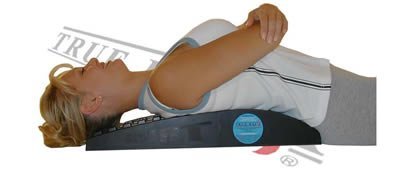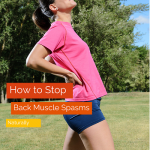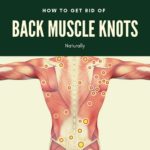Do you wonder why your lower back hurts after every time you work out? Are you worried about causing irreversible damage to your back?
Take a deep breath.
Usually, it’s normal to feel sore or stiff a few days after a hard session at the gym or a long run, even if you had no pain at the time of the activity.
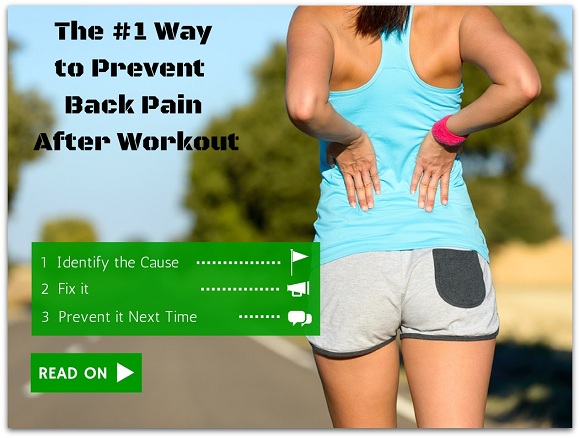
But why does it keep happening to you? What causes lower back pain after a workout and most importantly – how to prevent it from happening again?
This guide offers simple answers to all of these questions.
Overview
What Causes Lower Back Pain After Working Out?
According to research, a few possible causes for lumbar pain after exercising are:
1. DOMS – Delayed Onset Muscle Soreness – also known as “muscle fever“, this common phenomenon usually occurs after resistance or strength training and tends to resolve over a few days on its own.
If you feel muscle pain after exercising, it’s probably caused by tiny tears in your muscle tissues after working them harder than they’re used to.
DOMS symptoms range from tenderness and stiffness to severe and debilitating pain that restricts movement.
The good news is that you don’t have to suffer silently for 3-4 days. You can dramatically speed up your muscle recovery and prevent the pain entirely – without taking painkillers (or lying helpless in your bed for days).
2. Herniated Disk and Sciatica – if your lower back pain after working out is not localized but instead radiates down your legs and/or buttocks – it could be a sign of a herniated or bulging disc.
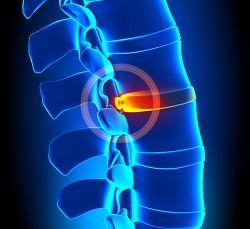
This often happens to people that do weightlifting.
According to studies, using excessive weights or doing it the wrong way – puts the back in a compromising position that may lead to injury. Sudden pressure can also cause a bulging disc and sciatica.
Your spinal disks are soft, rubbery pads found between the hard bones (vertebrae) that make up the spinal column.
In the middle of the spinal column is the spinal canal, a hollow space that contains the spinal cord and other nerve roots.
The discs between the vertebrae allow the back to flex or bend.
Disks also act as shock absorbers.
The center of the disk is a gel-like substance called the nucleus. A disk herniated or ruptures when part of the center nucleus pushes the outer edge of the disk into the spinal canal and puts pressure on the nerves.
In this case, you should immediately stop your exercise to prevent more damage, and use these home treatments for a herniated disc or sciatica.
The Best Way to Prevent Low Back Pain after Exercising
If you want to easily prevent muscle soreness after working out – end every workout with a session of home back traction. Back traction is just a fancy name for a stretching device, that helps you get a better stretch than you could have done on your own.
Stretching your lower back muscles gives them the rest they need after working so hard. Also, if you want to keep working out regularly, you need to keep your muscles flexible.
I’m sure you always stretch your back after working out and wonder why it doesn’t prevent your back pain.
You simply need to take your back stretching up a notch, while supporting your spine to stay aligned – safely. A back traction device will also prevent you from stretching the wrong way – which can lead to further damage and injury.
A good back traction device will decompress your spine, which means creating more space between your vertebrae and relieving the pressure of the nerves.
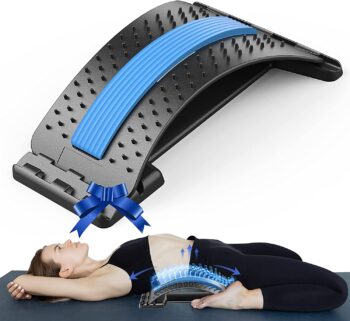
Spinal decompression immediately boosts the blood circulation in your back, bringing healing anti-inflammation components to your muscles and spinal disks.
Doing back traction after exercising may be the ultimate way to prevent lower back pain, whether it’s muscle-related or spinal-disks-related.
If you have a high-quality home back traction device – it will only take a few minutes of using it to prevent major muscle soreness and back pain.
What’s the Best Lumbar Stretcher?
There are so many back traction devices on the market. Some of them are simple to use, need no assembly, are portable, and are not expensive. Others are more sophisticated, allow for more adjustment, and of course – are more expensive.
On this scale – the most simple and low-cost option is a non-powered orthopedic (arched back stretcher). The most sophisticated ones include inversion tables and posture pumps.
Inversion tables use gravity to pull your discs apart and allow healing nutrients to rehydrate the discs. Posture pumps do the same, but you don’t have to hang upside down when you use them.
All of them allow for the muscles to truly relax while supporting your back in a proper posture and correct position.
It will keep you flexible, and in shape and allow you to continue your activities safely and pain-free.
Should You Work Out When Your Lower Back Hurts?
Maybe you feel, like many people, that you have to pound through pain in order to keep up with your exercise plan. However, this is not in your best interest.
Pain is your body signaling you to slow down. The only exercise recommended when your back hurts is stretching.
Listen to your body and ask yourself: what’s best for me now: lifting weights, jogging, or possibly taking it down a notch with a light/powerful stretching session?
(Whatever you do, please avoid exercises that can make your back pain worse!)
How Long Does it Take for Lower Back Pain from Lifting to Go Away?
According to studies, lumbar pain from lifting can last from 14 days to 6 weeks at most. Most people with moderate low back pain make a full recovery within days or weeks. These studies also found that early intervention, such as exercise (mostly swimming) and manual therapy (such as self-massage), can reduce the duration of low back pain.
Why Does My Lower Back Hurt When I Do Leg Workout?
Several causes of lower back pain when you workout your legs (running, squats, etc.) are poor posture (in exercises such as squats or deadlifts), weak core muscles (lead to poor posture), tight hip flexors (the pelvis is tilted forward and puts strain on the lower back), and increasing the intensity of your leg workout too quickly.
To prevent this, make sure you keep a good posture when you work out, engage your core muscles (and strengthen them through planks), and do some hip stretches, foam rolling, and yoga to loosen up tight hip flexors.
To your health and happiness,
Meital
Studies
Fares MY, Fares J, Salhab HA, Khachfe HH, Bdeir A, Fares Y. Low Back Pain Among Weightlifting Adolescents and Young Adults. Cureus. 2020 Jul 11;12(7):e9127.
Traeger A, Buchbinder R, Harris I, Maher C. Diagnosis and management of low-back pain in primary care. CMAJ. 2017 Nov 13;189(45):E1386-E1395.
Gordon R, Bloxham S. A Systematic Review of the Effects of Exercise and Physical Activity on Non-Specific Chronic Low Back Pain. Healthcare (Basel). 2016 Apr 25;4(2):22.

